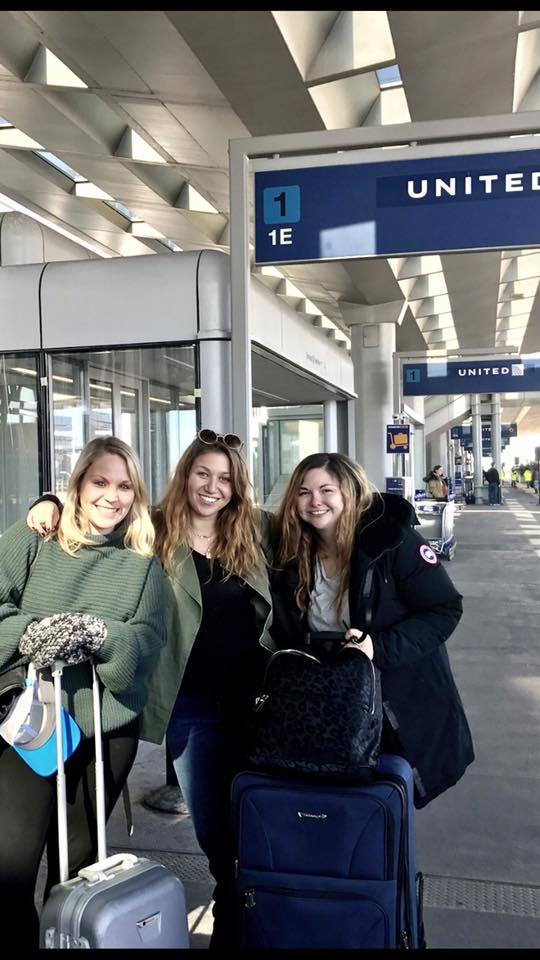
Some children with autism engage in behavior like head banging and hair pulling for many different reasons including, but not at all limited to, pain & seizures.
I’m sitting in my office when I get the familiar knock on my door accompanied with, “It’s a crisis and you are needed!” This is the prompt that has me jump up from my chair, pull my hair back into a bun, and run toward the problem. I can usually hear where it is coming from based on the screams and loud banging from one of our therapeutic rooms. I enter the room and assess the situation. Then, I jump in to administer a PCM Restraint Procedure if the patient is harming themselves or others.
We didn’t always do this. For the first three years Autism Family Center was open, we considered ourselves a restraint-free facility. As a small organization, we were able to manage the crises that occurred on a case by case basis. As we grew, the quantity of dangerous situations increased and our team faced a choice. As leadership, we had to decide if we were going to turn away challenging clients. But, we could step up our game and become a facility capable of treating any child that needs us.
As professionals in the field, we understand why these behaviors occur. We understand that our kids and teens are struggling to communicate their needs. For example, kids on the spectrum sometimes hit themselves on the head repeatedly. This is one form of Self Injurious Behavior. The behavior is baffling to people who don’t understand autism. But to those of us who work with these kids, we understand. We know the kids are trying to tell us something. They are struggling to communicate with the basic language skills others have.

Some children with autism engage in Self-Injurous Behavior like head banging, hair pulling, and self-biting.
These children may experience migraines or ringing in their ears as a side effect of their medication. They don’t know how to tell us this so, instead, they hit their head as an attempt to relieve the pain and discomfort. And when their therapists step in to stop them, again, these children are lacking the communication skills to tell us “I’m in pain.” So, instead, they may aggress toward their therapists.
We saw our patients hurting themselves and hurting others. And thus we were faced with the option of restraints. So we headed to Denver for Professional Crisis Management Association Training. When we returned, we were not only certified in Professional Crisis Management. We were also certified as Instructors so we could take this knowledge and pass it on to our staff.

Autism Family Center Team Headed to Professional Crisis Management Association Training
My team and I arrived excited for this new opportunity. We were drained from the stories keeping us up at night - children who hurt themselves, each other, or our staff. We only blamed ourselves because we weren’t prepared and we knew it was time to change that.
We studied under the Vice President of the Professional Crisis Management Association (PCMA), Merrill Winston. The intensive week-long training taught us skills that we immediately took home to implement. Within days of our return, there was a noticeable change at the center. It wasn’t that crises stopped. That isn’t a reality for us. Instead, what we found is that there was a solid action plan when there was a concern for safety. Once implemented, any dangerous behavior was managed without harm to one child or staff member.
Merrill then took the time to speak with me to assess why the resistance to restraints exists. We talked about what PCMA has done to improve upon crises procedures to ensure they are used in a way that is effective, necessary, and safe.
History of Restraints & Why Many Are Anti-Restraint
Merrill and I discussed the “Anti-Restrain Movement” for the majority of our interview. Yet he says, “I don’t run into that many people nowadays that call themselves anti-restraint.” But there is still a problem. If you think about the word restraint and what that means, it is an unsettling feeling. It boils down to holding people down against their will. But Merrill explains that parents restrain their children every day.
Parents of young children use “restraints” in many different forms. They hold onto their hands to stop them from running into the street. Parents block their hands from a stove or any other dangerous area. Even car seats can be seen as a form of restraint. All these examples are a way of stopping a young child from doing what they want but why do parents do it? “To keep them safe!” Merrill exclaims. A child - or a teenager/young adult with limited skills - will be faced with a situation in which they are in danger. Restraints might be needed to keep that person safe. But many are resistant to restraints and, to Merrill Winston, this is a multifaceted issue.
Merrill tell us, “there’s a commonly held belief that teachers, therapist, etc are using the restraint as a form of punishment. Unfortunately, there are bad people in the world who do not use restraint improperly. Restraint have, in the past, been used inappropriately, used with malice and used in a way that hurts the child. And it will be again. There are bad people but most of them are not.”
What makes people feel uneasy about restraint procedures is not the procedures themselves. It is when they are used improperly or with ill-will.
He continues to explain, most people understand “that restraint is necessary in an organized society. That is why we have the police. Most people are law abiding citizens but some are not and they will not stop under verbal control. When people do not respond to verbal control we have to get into physical control.” According to PCMA, physical control takes the form of a gentle restraint. The restraint stops an individual from harming themselves or others. It also does not cause the patient any pain or discomfort. As a trainee who had to pretend to be the patient many times, I can personally attest the procedures are not remotely painful. In a lot of cases, they are relaxing because there is gentle pressure on certain areas of the body.
As a society, we will always need restraints unless we plan to let people do whatever they want. Merrill has a name for people who do whatever they want - actually a few names: criminals, movie stars, and politicians.
How PCMA Improved Upon Other Restraint Procedures Using Behavior Analysis
There are a lot of people who are hesitant toward restraints. PCMA stepped in to improve upon former and current procedures that may not be as effective, and may not be as safe. When I asked Merrill what was different about PCM procedures he said we, “make the individual an active participant in the procedure. Based on what they do in real time, we change what we do. The person can choose to start relaxing which means staff have to start releasing. This means it is a client driven process.” What Merrill explained is that each time the patient relaxes, the staff must immediately reduce the the level of restraint. This gives the patient a chance to return back to their planned activities. In other types of procedures, a patient is released when they “meet a minimum criteria of five minutes of calm behavior or until staff feel safe.”
Professional Crisis Management Association (PCMA) was developed by Neal Fleisig, M.S., BCBA. Neal is a Board Certified Behavior Analyst. He developed PCM procedures using the basic principle used in Behavior Analysis. Merrill explains how the principles of Behavior Analysis are applied to physical procedures. He says, “we attempt to shape and develop a typical target behavior - walking or relaxing independently. We are trying to teach people how to relax using guidance. In this case it takes the form of physical restraint. You are doing two things at once. The first is protecting the person and others. The second thing we are doing is teaching the person how to relax so that they do not need to have people physically stop them.”
When Restraints are the Only Option
For Autism Family Center (AFC), we understood we may need to turn patients away who posed a safety threat. We had children who injured themselves and injured others. They had many reasons for doing so, including their own pain. But, none the less, safety was at stake. We didn’t want to close our doors to anyone. And while we were unsure how we felt about restraints, we knew we needed something. PCMA gave us an option to restrain patients while also utilizing methods of Behavior Analysis. PCM also ensures all people - staff and patients - are as safe as possible.
When I asked Merrill the most severe case he had ever seen PCM Procedures help with, he told me a story not too dissimilar to what we see at AFC. He told me a story about an adult who engaged in severe self injury. He would take his knee and jam it into his face and no one was able to stop him and he would go on for, sometimes, hours. Once the PCM procedure began, he learned very quickly just to lay still on the mat once he was placed into position. The staff only did the PCM procedure about half a dozen times when the patient started to display evidence of learning. PCM did not cure him. However, PCM tremendously cut down the number of times the patient could injure himself. Merrill explained, “[PCM Procedures] did not not constitute his treatment. It allowed us to keep him safe so we could continue to receive treatment.”
Restraints Should Never Be Used As a Form of Treatment
My conversation with Merrill Winston ended here. And this is the most important takeaway. This is the part that helps explain why restraints are necessary but only helpful when used properly:
Merrill explained that, “PCM Procedures help keep the person in placement so that they can receive treatment. The procedures can help with treatment by temporarily cutting off access to certain reinforcers that might strengthen the behavior. For example, if a child likes property destruction- every time they break something it provides motivation to go break another thing. With quick restraint he wouldn’t have been reinforced.”
PCM Procedures also keep children, teenagers, and young adults safe. Immediately following relaxation, they can return to typical intervention. According to Merrill Winston, PCM Procedures “fit in well with treatment. I don’t think it is impossible but I think it is extremely difficult to treat people who you cannot control.”
